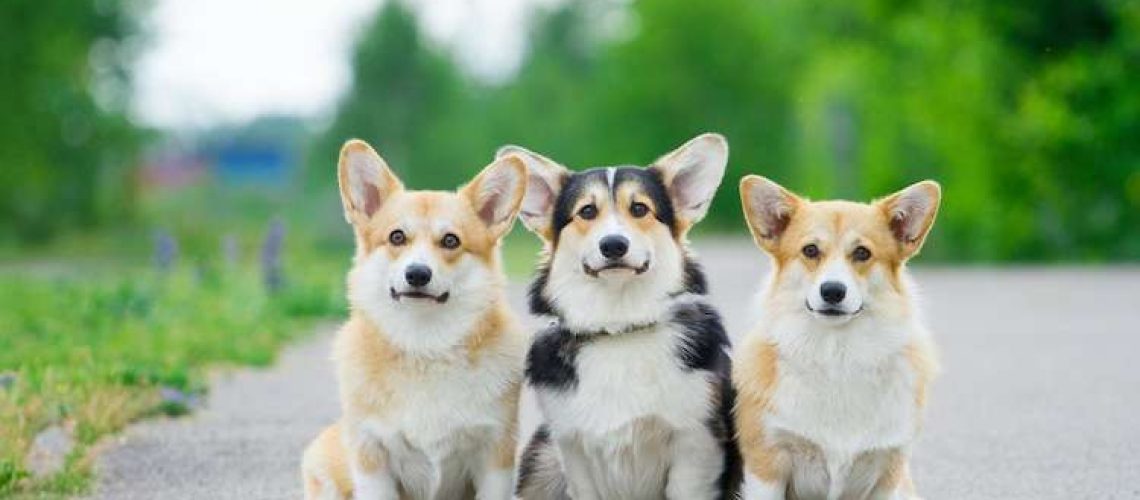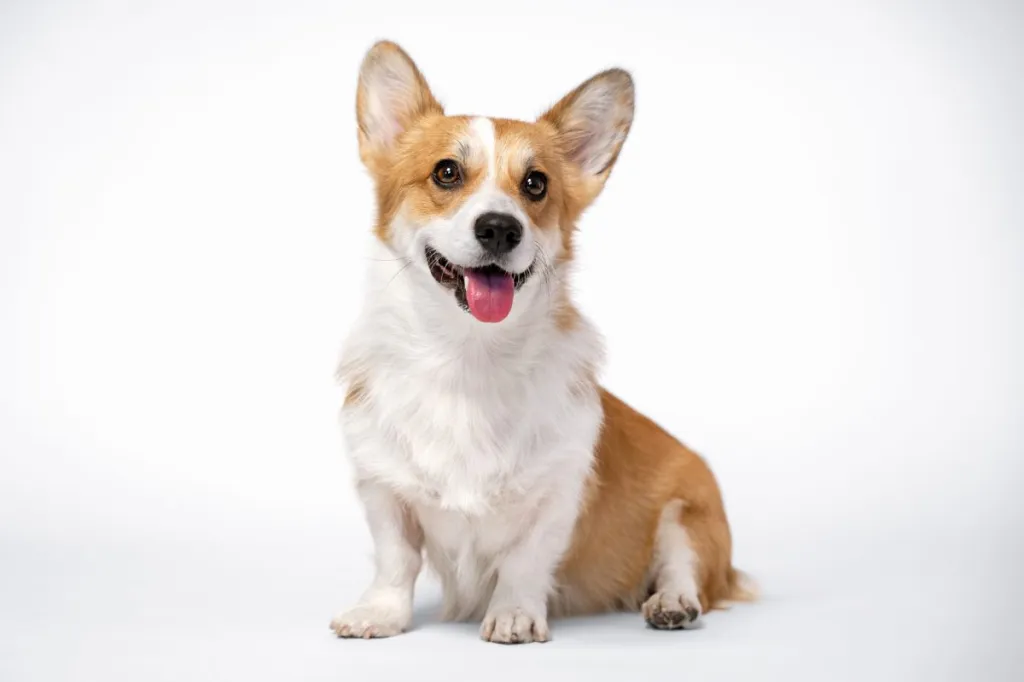Key Takeaways:
- Corgi puppies are known for their adorable appearance and short legs.
- They are a popular breed due to their friendly and playful nature.
- Corgis were originally bred for herding livestock, particularly cattle.
- These puppies require regular exercise to keep them healthy and prevent weight gain.
- Corgi puppies have a strong herding instinct and may try to herd other pets or family members.
Are you ready to embark on a journey filled with joy, cuteness, and fascinating facts? Brace yourself, because we're about to dive into the world of corgi puppies! These adorable little bundles of fur are guaranteed to bring a smile to your face and warm your heart. But it's not just about their undeniable cuteness – there's more to these pups than meets the eye. Understanding the charm and quirks of corgi puppies can give us a deeper appreciation for the wonders of nature and the incredible diversity of life. So get ready to be captivated by fun facts, mesmerized by cute photos, and let your heart melt with every wagging tail and floppy ear. Get ready for a corgi-palooza that will leave you wanting more!
Fun Facts About Corgi Puppies
Corgi puppies are incredibly adorable and have some interesting characteristics that make them unique. One fun fact about corgis is their short legs, which are a result of genetic mutation. Despite their small stature, corgis are known for their agility and can even participate in activities like agility training and herding competitions.
Another fascinating fact about corgi puppies is their distinct coat patterns. Corgis come in two main breeds: the Pembroke Welsh Corgi and the Cardigan Welsh Corgi. The Pembroke corgis have a shorter tail, while the Cardigan corgis have a longer tail. Both breeds can have various coat colors, including red, sable, black, and tan.
How Long Does It Take for a Corgi Puppy to Grow?
The growth rate of a corgi puppy depends on various factors such as genetics, diet, and exercise. On average, it takes around 12-18 months for a corgi puppy to reach its full size. During this time, they go through different stages of development.
At around six weeks old, corgi puppies start transitioning from their mother's milk to solid food. They continue growing rapidly until they reach six months of age when their growth rate slows down. By one year old, most corgis have reached their adult height but may continue filling out until they are around 18 months old.
Distinctive Physical Features of Corgi Puppies
Corgi puppies have some unique physical features that set them apart from other dog breeds. One distinctive feature is their long body with short legs, which gives them an adorable appearance. This body shape is ideal for herding as it allows them to stay low to the ground and easily maneuver around livestock.
Another physical feature of corgi puppies is their expressive eyes. Corgis have large, round eyes that are often described as "button-like." These eyes can convey a range of emotions, from curiosity to playfulness, making them even more endearing to their owners.
The Playful and Energetic Nature of Corgis
Corgi puppies are known for their playful and energetic nature. They have a natural herding instinct, which means they may try to herd people or other pets in the household. This behavior can be redirected through proper training and providing them with plenty of mental and physical stimulation.
Corgis also have a reputation for being highly intelligent dogs. They thrive on mental challenges and enjoy learning new tricks or participating in activities such as obedience training or puzzle-solving games. Keeping a corgi puppy mentally stimulated is essential to prevent boredom and destructive behaviors.
The Origin and Purpose of Corgis
Corgis originated in Wales, United Kingdom, where they were primarily used as herding dogs. The two main breeds, Pembroke Welsh Corgi and Cardigan Welsh Corgi, have slightly different histories but share the same purpose of assisting farmers in herding cattle and sheep.
Pembroke Welsh Corgis were favored by the British royal family, particularly Queen Elizabeth II, who has owned several corgis throughout her life. Their popularity grew due to their charming personalities and adorable looks.
Training Tips for Well-Behaved Corgi Puppies
Training corgi puppies requires consistency, positive reinforcement, and patience. Here are some tips for successful training:
- Start early: Begin training your corgi puppy as soon as you bring them home. Early socialization and basic obedience training are crucial for their development.
- Use positive reinforcement: Reward your corgi puppy with treats, praise, and affection when they exhibit desired behaviors. This will motivate them to repeat those behaviors in the future.
- Be consistent: Establish clear rules and boundaries for your corgi puppy and ensure everyone in the household follows them consistently. This will help avoid confusion and reinforce good behavior.
- Provide mental stimulation: Corgis are intelligent dogs that need mental stimulation to thrive. Incorporate puzzle toys, interactive games, and training sessions into their daily routine to keep their minds engaged.
Things to Consider Before Adopting a Corgi Puppy
While corgi puppies are undeniably adorable, there are several factors to consider before adopting one:
- Exercise needs: Corgis have high energy levels and require regular exercise to prevent boredom and maintain a healthy weight. Ensure you can commit to providing them with daily walks or playtime.
- Grooming requirements: Corgis have a double coat that sheds moderately throughout the year. Regular brushing is necessary to keep their coat healthy and reduce shedding. They also may require occasional bathing.
- Training commitment: Corgis are intelligent but can be stubborn at times. Training requires patience, consistency, and positive reinforcement techniques. Be prepared to invest time in training your corgi puppy.
- Lifestyle compatibility: Consider if a corgi's herding instincts align with your lifestyle. They may try to herd children or other pets in the household, which may not be suitable for everyone.
In conclusion, corgi puppies are incredibly cute and have some interesting facts. Their short legs and fluffy butts make them adorable, while their intelligence and herding instincts make them fascinating pets to learn about.
Why are corgi puppies so cute?
Corgis are known for their cute features, including their expressive faces, pointy ears, medium-length noses, long bodies, short legs, fluffy hindquarters, and lovable personalities. All of these traits come together to create an irresistibly cute and adorable bundle.
What are corgis facts for kids?
Welsh corgis are known for their loving and devoted nature. These dogs were introduced to Wales many centuries ago from other regions. The Pembroke corgi can trace its ancestry back to dogs brought by weavers from Belgium around 1100 CE. The Cardigan corgi gets its name from the Welsh county of Cardiganshire.
What 2 breeds make a corgi?
Around 1,000 years ago, during the Viking invasion and the arrival of Flemish weavers, a Spitz-type dog was introduced to certain parts of Wales. This Spitz breed was then bred with the original Corgi to create the Pembroke Welsh Corgi that we know today.
What is a corgis favorite thing to do?
Owners of Corgi dogs are aware that this breed is lively and full of energy. They are intelligent and can be easily trained, but they require a lot of attention. Otherwise, they will find their own ways to entertain themselves. Corgis enjoy playing fetch, tug-of-war, and engaging in activities where they have to search for hidden treats or dog food.
Is corgi a clingy dog?
The affectionate Corgi is known for being very sociable and dislikes being left alone, making them prone to developing separation anxiety when their owners are away from home.
What are unique corgi traits?
Pembrokes are recognized for their happiness, affection, and intelligence, although they can be stubborn or independent at times. They are trainable, but don't expect them to be completely obedient. They enjoy thinking for themselves. While they aim to please their owners, food is a strong motivator for them during training.

















